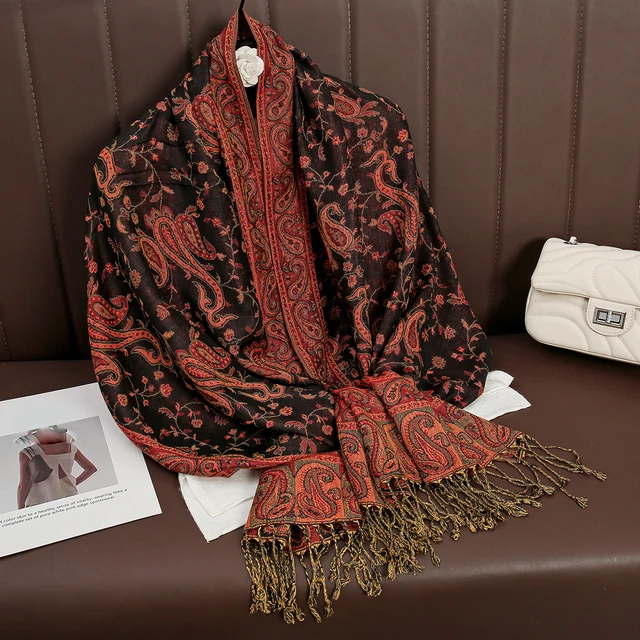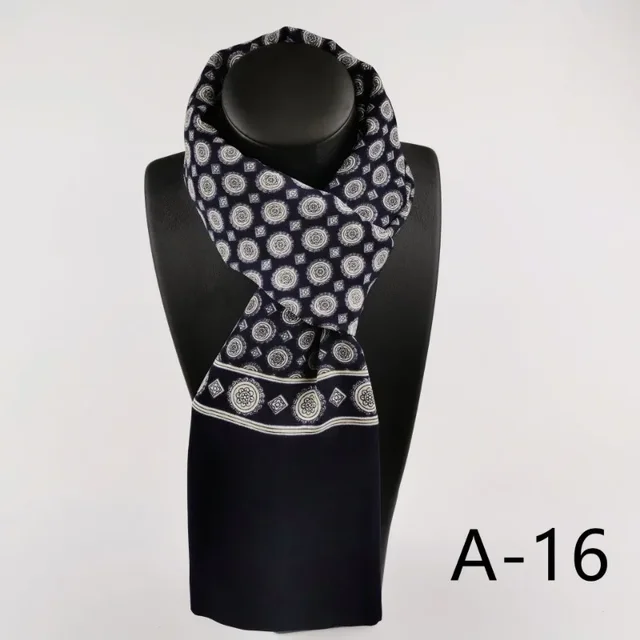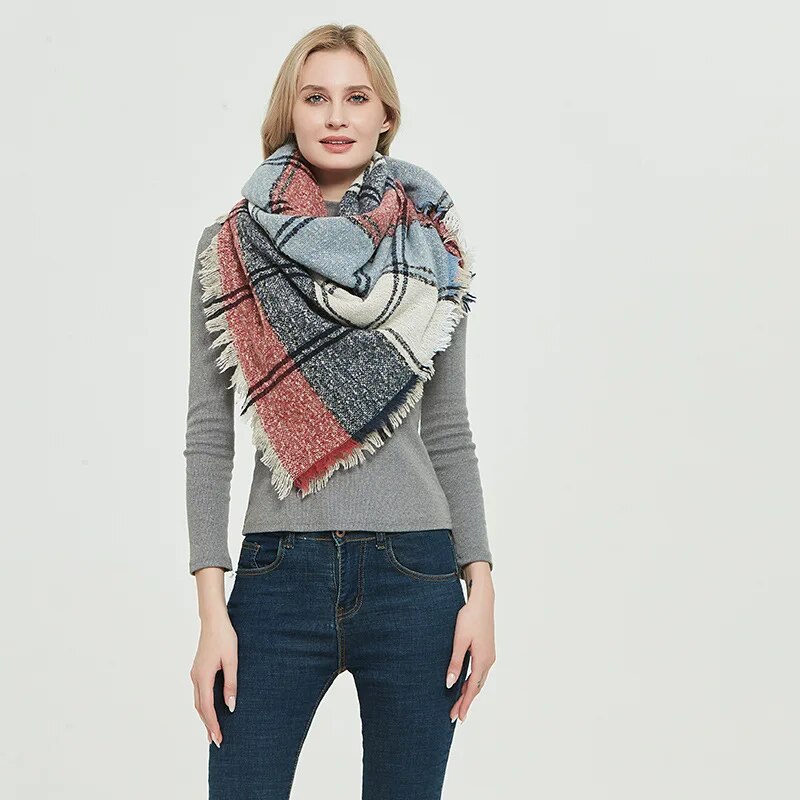
Introduction: The Essential Winter Scarf
These are more than just a cozy accessory; they are a vital part of your cold-weather wardrobe. Whether you’re navigating snowy streets or adding a finishing touch to your winter outfit, a good scarf can provide warmth, style, and comfort. From luxurious cashmere to versatile wool blends, these come in a variety of materials and designs that cater to every taste and need.
As the shopping season approaches, it’s the perfect time to explore the world of winter scarves. This guide will cover everything from the history and benefits of scarves to tips for selecting the perfect one to keep you warm and stylish throughout the cold months.
The History of Winter Scarves
The winter scarf has a rich history that spans centuries and cultures:
- Ancient Origins: Scarves have been used since ancient times, initially for practical purposes. In ancient Rome, soldiers wore scarves, known as “focale” or “sudarium,” to protect themselves from the cold and to wipe sweat during battles.
- Middle Ages: During the Middle Ages, scarves evolved into a symbol of status and wealth. Nobles and royalty often wore scarves made from luxurious materials like silk, adorned with intricate patterns and embroidery.
- 19th Century: The 19th century saw the rise of the scarf as a fashionable accessory. In Europe, scarves became popular among both men and women, often worn with overcoats and formal attire.
- 20th Century: The 20th century brought about a variety of scarf styles and materials, with designers incorporating scarves into their collections. The winter scarf became a staple of winter fashion, with materials like wool, cashmere, and synthetic blends offering both warmth and style.
- Modern Era: Today, winter scarves are a versatile accessory worn for both fashion and function. From chunky knits to sleek cashmere, scarves are available in a wide range of designs, catering to different tastes and preferences.
Benefits of Wearing a Winter Scarf
A winter scarf offers several benefits that make it a must-have accessory for the cold season:
- Warmth: The primary function of a winter scarf is to provide warmth by insulating your neck and upper body against cold temperatures. A good scarf can prevent heat loss and keep you comfortable in harsh winter weather.
- Style: Scarves add a layer of style and sophistication to your winter outfits. Whether you prefer a classic look or something more trendy, a scarf can enhance your overall appearance and express your personal style.
- Versatility: Winter scarves are incredibly versatile, allowing you to experiment with different styles and ways of wearing them. They can be draped, wrapped, or tied in various ways to create different looks.
- Protection: A winter scarf can protect your neck, face, and chest from the elements, including cold winds, snow, and rain. It acts as a barrier, keeping you warm and dry in inclement weather.
- Comfort: Scarves made from soft, high-quality materials like cashmere or merino wool offer a luxurious feel against the skin, providing comfort as well as warmth.
When Is Winter Scarf Shopping Season?
The shopping season for winter scarves typically aligns with the onset of colder weather. Here are some key times to consider:
- Early Fall (September to October): As temperatures start to drop, retailers begin to stock up. Shopping in early fall allows you to get ahead of the season and choose from a wider selection of styles and colors.
- Holiday Season (November to December): The holiday season is a popular time for scarf shopping, both for personal use and as gifts. Many brands offer special holiday collections, making it an ideal time to find unique and festive scarves.
- Winter Sales (January to February): After the holidays, many retailers hold winter sales, offering discounts on scarves and other cold-weather accessories. This is a great time to find high-quality scarves at reduced prices.
- End-of-Season Sales (March): As winter comes to an end, end-of-season sales provide an opportunity to purchase scarves at discounted prices. These sales often feature remaining stock from the winter season.
Styles and Materials: Choosing the Right Winter Scarf
When shopping for a winter scarf, consider the various styles and materials available to find the one that best suits your needs:
- Styles:
- Classic Wool Scarf: A wool scarf is a timeless choice that offers both warmth and durability. Wool scarves come in various patterns, such as plaids, stripes, and solids, making them versatile for different outfits.
- Cashmere Scarf: Cashmere scarves are known for their luxurious softness and warmth. They are lightweight yet insulating, making them a popular choice for both casual and formal wear.
- Chunky Knit Scarf: Chunky knit scarves provide extra warmth and add a cozy, textured look to your winter attire. They are ideal for layering and can be styled in multiple ways.
- Infinity Scarf: An infinity scarf is a continuous loop of fabric that can be worn in various ways. It’s easy to style and provides consistent warmth around your neck.
- Blanket Scarf: Blanket scarves are oversized scarves that can double as a wrap or shawl. They are perfect for adding an extra layer of warmth and can be styled in several ways for a chic look.
- Silk and Wool Blend Scarf: For those who prefer a lighter scarf with a touch of luxury, a silk and wool blend offers a combination of softness, warmth, and elegance.
- Materials:
- Wool: Wool is a natural fiber known for its warmth and durability. It’s an excellent choice for winter scarves, providing insulation while being breathable and moisture-wicking.
- Cashmere: Cashmere is a premium material that offers unparalleled softness and warmth. It’s lightweight, making it comfortable to wear, yet highly effective at retaining heat.
- Merino Wool: Merino wool is finer and softer than regular wool, offering a smooth feel against the skin. It’s also known for its excellent temperature regulation and moisture management.
- Synthetic Blends: Synthetic materials like acrylic, polyester, and nylon are often blended with natural fibers to create affordable, durable, and easy-care scarves. These scarves can mimic the look and feel of wool or cashmere at a lower price point.
- Fleece: Fleece scarves are made from synthetic materials that offer excellent warmth and softness. They are lightweight, quick-drying, and ideal for outdoor activities.
- Alpaca: Alpaca wool is softer and warmer than sheep’s wool, making it a luxurious choice for winter scarves. It’s also hypoallergenic and less likely to cause irritation.
- Features:
- Reversible Designs: Some scarves feature reversible designs, offering two different patterns or colors in one. This versatility allows you to match the scarf with multiple outfits.
- Fringed Edges: Fringed edges add a touch of classic style to scarves. They can be a simple decorative element or more elaborate, depending on the design.
- Patterns and Prints: From classic plaids to bold prints, patterns add personality to your winter scarf. Choose patterns that complement your wardrobe or make a statement.
- Color Options: Neutral colors like black, grey, and beige are versatile and easy to match, while bold colors and patterns can add a pop of interest to your winter look.
- Length and Width: The length and width of a scarf affect how it can be styled. Longer scarves can be wrapped multiple times for added warmth, while shorter scarves offer a more streamlined look.
Tips for Shopping During Winter Scarf Season
To ensure a successful purchase, keep these tips in mind when shopping for winter scarves:
- Consider Your Climate: Choose a scarf that matches the climate you live in. Heavier materials like wool or cashmere are ideal for extremely cold temperatures, while lighter options like merino wool or synthetic blends may be sufficient for milder winters.
- Match with Your Wardrobe: Consider the colors and patterns in your wardrobe when selecting a scarf. Neutral colors are versatile and can be paired with various outfits, while bold patterns can add a statement piece to your look.
- Check the Quality: Examine the quality of the material and craftsmanship. Look for well-made scarves with tight weaves, even stitching, and soft textures.
- Set a Budget: Winter scarves come in a range of prices, from affordable options to luxury pieces. Set a budget and look for scarves that offer the best value within your price range.
- Try Different Styles: Don’t be afraid to experiment with different styles and materials. Try on scarves in various lengths, widths, and textures to see what suits you best.
Care and Maintenance of Winter Scarves
Proper care will help extend the lifespan of your winter scarves. Follow these tips:
- Follow Care Instructions: Always follow the manufacturer’s care instructions for cleaning and maintenance. Some materials, like cashmere or wool, may require special care such as hand washing or dry cleaning.
- Store Properly: Store scarves in a cool, dry place when not in use. To avoid wrinkles, fold them neatly or hang them on a scarf hanger. Avoid hanging heavy scarves for extended periods, as this can cause stretching.
- Avoid Pilling: To prevent pilling on wool or cashmere scarves, avoid rubbing them against rough surfaces. If pilling occurs, gently remove the pills with a fabric shaver or a special comb.
- Wash Carefully: For washable scarves, use a mild detergent and cold water. Hand washing is often recommended for delicate materials. After washing, lay the scarf flat to dry to maintain its shape.
- Repair Damage: If your scarf becomes damaged, such as developing a hole or frayed edge, repair it promptly to prevent further issues. Some materials can be mended by a professional or using a needle and thread.
Conclusion: Wrapping Up in Style
A winter scarf is an essential accessory that combines functionality with fashion. Whether you’re braving the cold or adding a stylish layer to your outfit, the right scarf can make all the difference. As the shopping season for winter scarves begins, take the time to explore the various styles, materials, and features available. With the tips and insights provided in this guide, you’ll be well-equipped to find the perfect scarf to keep you warm and stylish all winter long.



